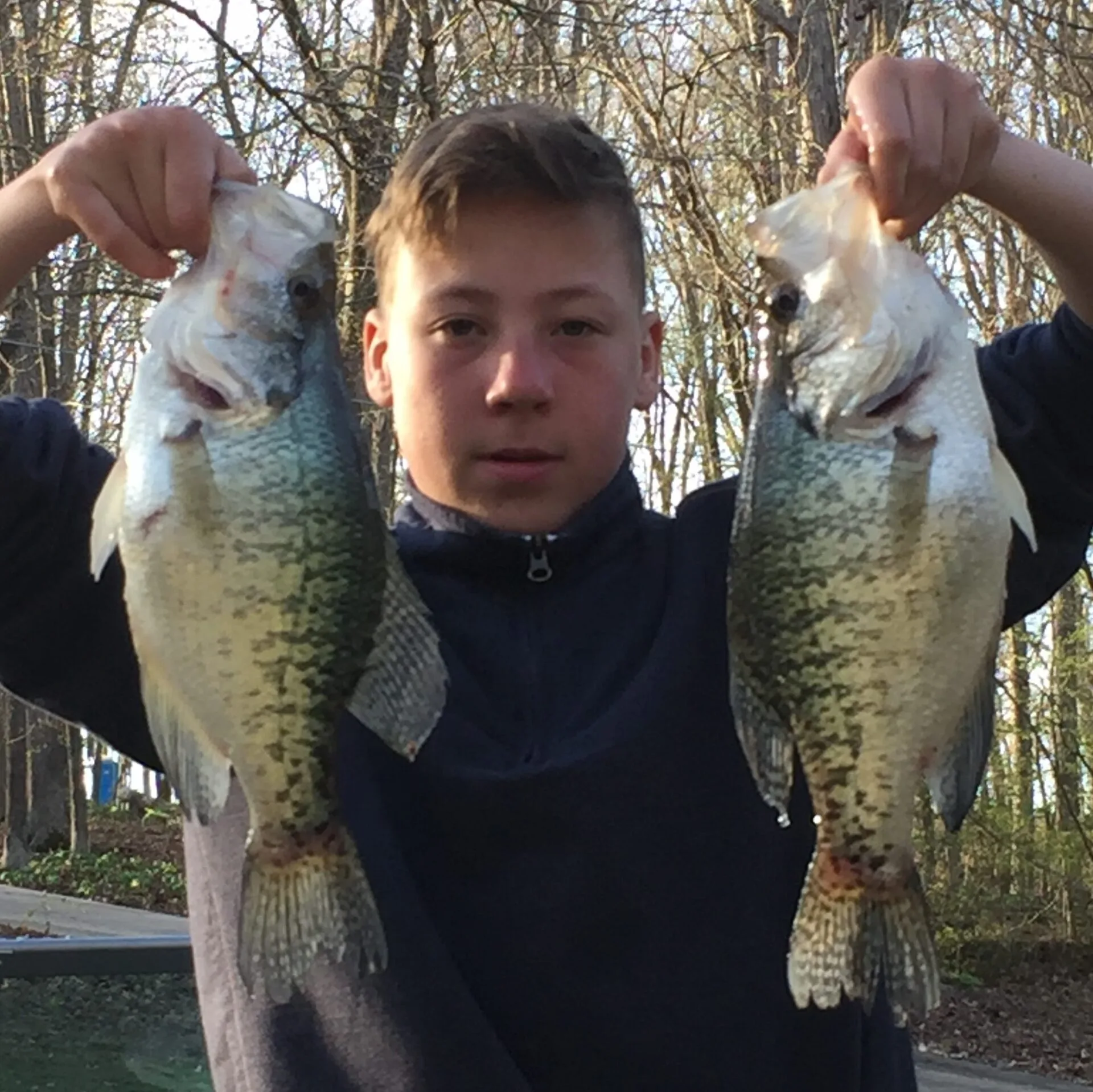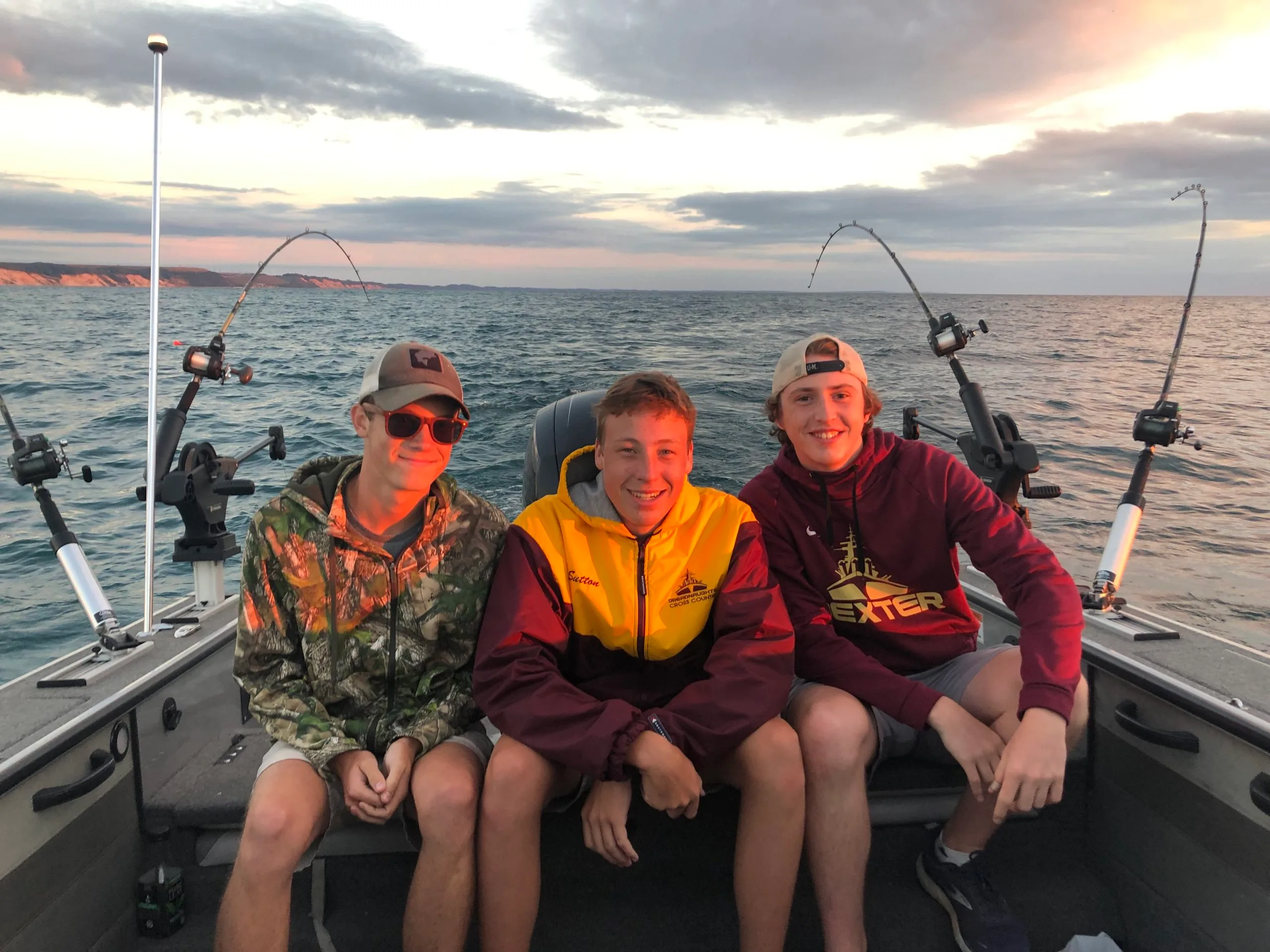How to Locate Crappies

* This page contains affiliate links. The Great Lakes Fisherman may earn a commission on items purchased through these links. For more on this, please click here.
When fishing a new body of water for crappie, it always helps to know where to begin. As the old saying goes, 90% of the fish are located in 10% of the lake. The trick, of course, is to know which 10% of the lake to focus on. In this article, we will look at two factors that are important to crappie and how to use these to help you find slabs no matter which body of water you fish.
Crappie Prefer Low-Light Conditions
Many of the lakes in the Great Lakes region were formed by glaciers at the end of the last ice age. The lack of running water into many of theme along with spring-like ground water results in very clear water many of its lakes. Because crappie prefer low-light conditions, light penetration in clear water usually pushes them deeper. This is very different from lakes in the lower Midwest and the southern states where most of the lakes are man-made impoundments, full of the muddy water fed to them by the massive volumes of up-stream farmland. There, crappie are often found much shallower due to the lower light conditions in the water.
This doesn’t mean that you will never find crappie shallow in northern waters because there are many factors that determine which depth fish will be found. But generally, crappie stay deeper in these lakes. If the lake is very clear with little structural cover, the crappie may hold in the weeds during the day and not emerge until night to begin feeding.
Crappie Like Vertical Structure
Crappie are almost synonymous with the word structure. If you don’t believe it, just go to your local Cabela’s or Bass-Pro Shops aquarium and take note of where you find the crappie. That said, here some of the common types of structure that crappie can be found in.
1:Non-Floating Docks or Platforms
Docks with posts offer both vertical structure and shaded (darker) water. Depth matters, though, and if the water is very clear, it won’t matter how much shade the dock offers, the fish will go looking for deeper water.
2. Floating Docks,
Floating docks can offer the dark water that crappie are looking (depth-dependent, as above) but lacks the vertical structure that dock supports offer. If the dock is near other structure, like rip-rap or submerged tree limbs, it can be just as good as the a non-floating dock.
3. Submerged Trees and Stumps
In impoundments, submerged trees and stumps can often be found in deeper (darker) water, making them great places to find hiding slabs.
4. Downed Shoreline Trees
If the shoreline is relatively deep and holds dark-water, down trees can be a perfect place to find fish. This natural habitat is ideal.
5. Weed Beds
Although this is last on the list, it is certainly not least. As discussed, in natural, clear-water lakes, weeds often offer the only vertical structure in the lake. They can be difficult to extract though, especially on bright, sunny days. Hitting them at first or last light on these lakes is key.
Putting These Factors Together
To locate crappie, first determine where there is structural cover for the fish using the list above. Once you have noted these locations, start with the deepest cover first and work your way back shallow. As with all fishing, traditional sonars can really help locate fish in the deeper water, while side-scan and/or livescope can help with locating the fish in shallower water.Following this formula should help you put more crappies in the cooler.
Boating Safety Tips for Fishing Big Water from a Small Boat

* This page contains affiliate links. The Great Lakes Fisherman may earn a commission on items purchased through these links. For more on this, please click here.
Think you need a 24’+ boat to safely fish the big water? Think again! With the technology and resources available today, big lake fishing is not out of reach for those with boats in the 16-22′ class. But while the great lakes are a paradise for those who love to fish, they can be dangerous if not respected. Read on for 5 tips to keep you safe on the big water.
Tip #1: Standard Safety Gear
Before thinking about getting your boat on these large bodies of water, be sure to have all of your standard safety gear up to date. This includes the following:
- Life Vests (Including a Throwable)
- Up-to-Date Fire Extinguisher
- Flares & Horn in Good Working Order
- GPS Unit
- A Well-Stocked First Aid Kit
- Small Basic Tool Kit
- Properly Working Navigation Lights
Tip #2: Communication
The ability to communicate is key. You should understand the cell coverage of your phone in whichever port you decide to fish from. You can check message boards and ask fellow fisherman for this if you live far from the lake. Fisherman are great people and while some may not want to give you the GPS coordinates of their favorite hotspot, I know very few who wouldn’t help with answering basic safety questions.
Ship to shore radios provide a great added feature even where cell coverage is good. In areas where cell coverage is limited or non-existent, a ship to shore radio is essential. You definitely don’t want to venture out into great lakes waters with no communication.
Tip #3: Know the Weather Forecast
Understanding the weather forecast for the day you plan to fish the great lakes is vital. There are many resources available these days to ensure a safe and enjoyable day on the water. There is simply no excuse for not knowing. Not only should the basic forecast for the day be understood, but the wind forecast is particularly important. Be sure to know the maximum wind speeds, including gusts, as well as the wind direction and how it might change throughout the day.
Tip #4: Invest in a Kicker Motor
A kicker motor is a second, small outboard motor (typically less than 25 hp) that can provide two major benefits. First, it can be your primary motor for trolling and save your main engine from running long hours at idle speed. Secondly, and more importantly, it can become a back-up motor to get you off of the water, should your main engine fail.
Tip #5: Know When to Pull the Plug
Understanding your limits and recognizing potentially hazardous situations is the one of the most important of these tips. The fish will still be there tomorrow and you need to ensure that you and your crew will be as well. Never venture further from port than your boat can handle. The smaller the boat, the closer to port you should remain. If your cell phone dies and you are 4 miles out, you may want to head a little closer to port. If any of your safety equipment fails or goes down, it might be time to get off of the water. And finally, the wind is your enemy. Modern forecasts are good, but they are not perfect. If there is any unexpected shift in the weather, it might be time to go. Waves on the great lakes can kick up in a hurry.
Following these tips will help ensure a safe and enjoyable day doing what you love!
